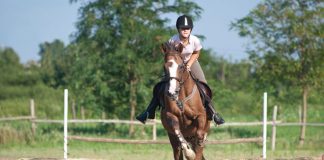Courses for jumper and equitation riders include tests that are more difficult than those found on the average hunter course. One of the most challenging is the rollback turn.
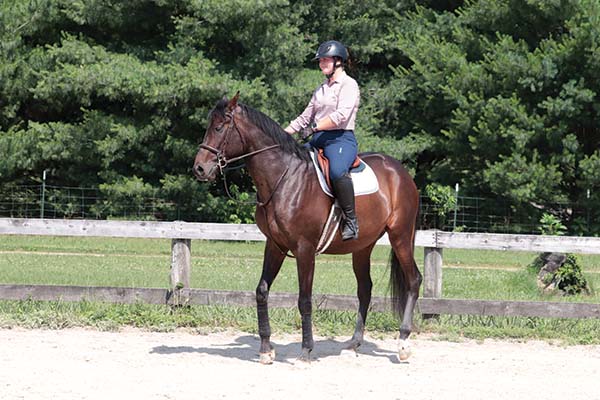
Master Three Rollback Basics
To help ensure that you and your horse are truly ready for rollback turns, make sure you can accomplish these three basic tasks.
1) GET COMFORTABLE USING AN OPENING REIN. To use an opening rein, maintain equal contact with each rein; be sure both hands are held on the same plane, above the withers. Next, “open” one hand out to the side, away from your horse’s shoulder. Your horse’s nose should tip slightly in the new direction.
An opening rein allows you to guide your horse into a turn without unbalancing his entire body. This is in contrast to the standard direct rein, which essentially pulls your horse around the turn.
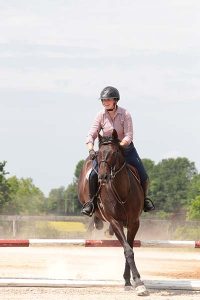
If a direct rein is used for a rollback turn, your horse could end up bulging through his outside shoulder until he’s over-bent in the shape of a “C.” This leaves him on a crooked track to the jump. An opening rein can eliminate this problem.
2) YOUR HORSE MUST BE ADEPT AT TURNS ON THE HAUNCHES. In response to your aids, your horse will be slightly bent in the direction of his turn, and then move his front end around his stationary hindquarters.
This prepares your horse for rollbacks, because he learns to commit to a sudden, precise change in direction. Plus, he’s prepared for the upcoming jump, because his weight remains balanced over his hindquarters. Ultimately, you should have the sensation that you are opening a door into the new direction and then pushing your horse through it with plenty of outside leg.
3) YOUR HORSE MUST BE ADJUSTABLE AT THE CANTER. While an enthusiastic partner is appreciated, your horse should never drag you to the jump. It’s tough to make a decent rollback turn if your horse is pulling through the bit. He needs to keep his weight off his forehand in order to turn tightly.
Practice half-halts and incorporate 10- and 20-meter circles into your canter flatwork so your horse learns to downshift and collect when asked. When you’re ready, you can graduate to some fun exercises.
Rail Rollbacks
You can get a feel for rollback turns without actually jumping. For this exercise, start on your right lead. Set a ground pole perpendicular to the arena rail, about six strides up from the short end of the arena.
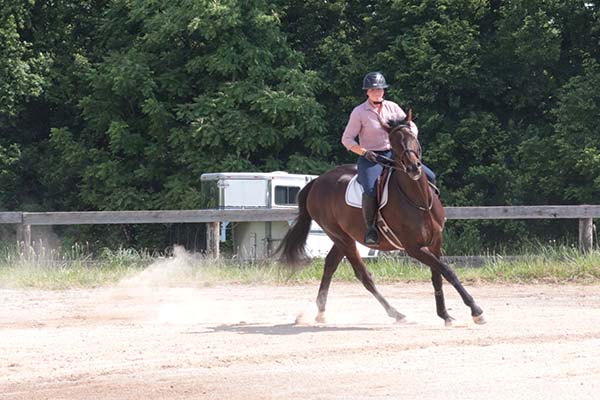
Canter on the right lead down the quarter line of the arena. Once you’re aligned side-by-side with the ground pole, look to your right to find a track that you can ride to the center of the pole. As you approach the end of the arena, ask your horse to half-halt and collect his canter. Then use a right opening rein to introduce the new direction and push your horse around the turn with your outside left lower leg.
The arena rail will encourage your horse to turn. It also serves as a visual reminder to maintain a straight track over the pole. Keep a steady canter rhythm; resist the urge to chase your horse down to the pole.
After you’ve done this several times, move the pole to the opposite end of the arena and repeat in the opposite direction (on the left lead). Eventually, you can replace the ground pole with a simple low jump.
Look, Turn, Circle
This exercise will help you develop an eye for piloting your horse through rollback turns. Set a cone or other marker in the center of the circular track you’re about to create. Then lay two 10- or 12-foot ground poles on opposite sides of the cone. Leave a good 3 feet of space between the cone and the end of each ground pole, or your circle will be too small. If you’re feeling particularly confident, substitute low cavalletti for the ground poles.
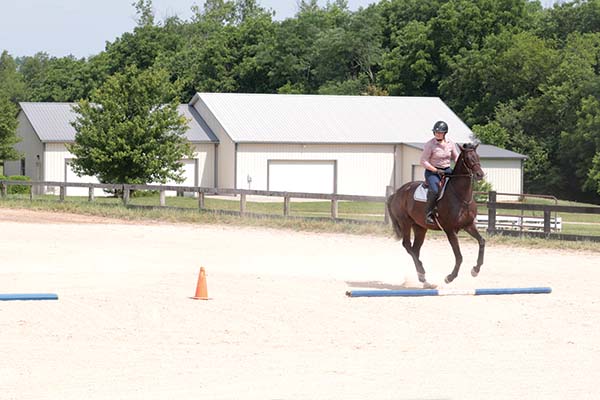
Start at the posting trot. Guide your horse over the poles in a circle using an inside opening rein and outside leg. The goal is to stay on a circular track that consistently takes you over the center of each pole. The only way to be successful is to keep your eye on the middle of each upcoming pole.
Vary the exercise by holding a two-point throughout the circle. Eventually you can canter over the poles, but beware: if you resort to pulling your horse around the circle, he’ll lose his canter rhythm, bulge out and bypass the poles. Instead, practice using an inside opening rein to guide your horse and outside leg pressure to keep him on the correct track.
Soon, you’ll be ready to roll to a win.
This article about rollback turns for equitation and jumper riders appeared in the September 2020 issue of Horse Illustrated magazine. Click here to subscribe!




